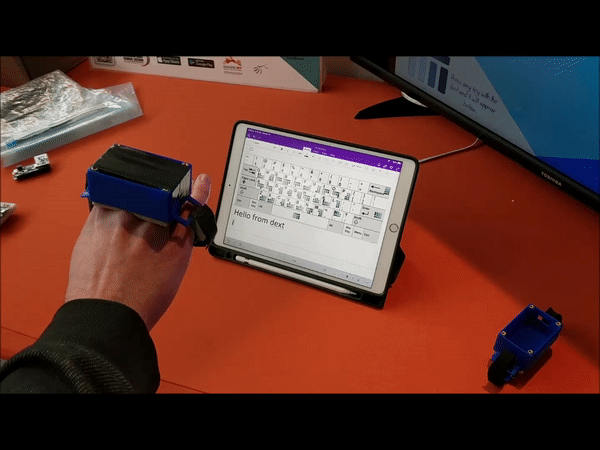Dext

This project was performed in a team of several people including other electrical engineers, computer engineers, a mechanical engineer, biomedical engineer, and industrial engineer. As part of a year-long capstone course at RIT, our goal was to iterate on the design from the previous year's class. The design was for a device that you could wear on one hand and type on a wirelessly connected device. One of the major design requirements was for the device to not obstruct usage of the hand while wearing it.
I designed the PCB to house an NRF52-based Arduino-compatible board and 6-axis IMU, as well as a daughterboard for mounting four tactical buttons. I also wrote the Arduino firmware to read the hand's orientation and construct a HID packet based on the buttons pressed.
The final version utilized the same IMU as an IC instead of a breakout board to minimize size, and so it involved soldering the very small LGA package and using X-ray inspection to confirm proper joints.
Over the course of development, other methods were considered and evaluated such as time-of-flight sensors, hall-effect sensors with magnetic rings, and conductive contact pads on each finger. However we found the haptic feedback provided from tactile buttons to be invaluable for fast, accurate, and confident typing.

